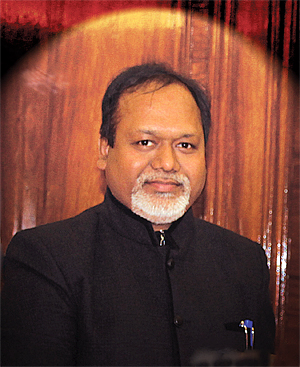INDIAN ARMED FORCES CHIEFS ON
OUR RELENTLESS AND FOCUSED PUBLISHING EFFORTS

SP Guide Publications puts forth a well compiled articulation of issues, pursuits and accomplishments of the Indian Army, over the years

I am confident that SP Guide Publications would continue to inform, inspire and influence.

My compliments to SP Guide Publications for informative and credible reportage on contemporary aerospace issues over the past six decades.
A Word from Editor-in-Chief
There has been some forward movement in the MMRCA deal as was clear after the visit of Laurent Fabius, the Foreign Minister of France, to India on June 30

One thing that is evident in the wake of the election of the BJP-led National Democratic Alliance (NDA) Government headed by Narendra Modi as the Prime Minister is the revival of hope and optimism amongst both the Indian armed forces as well as the global defence and aerospace majors. During the major part of the tenure of UPA II, defence procurement for the Indian armed forces had practically come to a standstill. For Indian military aviation perhaps the most exhilarating news is that the $20-billion deal for 126 medium multi-role combat aircraft (MMRCA) for which the request for proposal had been issued seven years ago and had been wallowing in uncertainty since the Rafale omni-role fourth-generation combat aircraft offered by Dassault Aviation of France was declared in January 2012 by the Indian Air Force (IAF) as the preferred platform.
However, there has now been some forward movement in the MMRCA deal as was clear after the visit of Laurent Fabius, the Foreign Minister of France, to India on June 30. Apart from the mega deal for the Rafale MMRCA, his interaction with the NDA Government also included proposal for other acquisitions that are in the pipeline, namely the $2-billion deal for six Airbus A330 Multi-Role Tanker Transport aircraft, the $6-billion deal for the co-development with France of the short-range surfaceto-air missiles (SRSAM) and six EPR nuclear reactors in Jaitapur. This issue has a report by Ranjeet Kumar on the recently conducted Indo-French interaction on these subjects.
Another and perhaps more spectacular event in the recent past that elevated the status of India in the global space fraternity was the impressive success of the PSLV C-23 launch that placed into individual orbits with high precision, five satellites from four different countries. Prime Minister Narendra Modi was present on site to witness the launch as also to give fresh direction and impetus to India’s space endeavour. He aptly described the success as “global endorsement of India’s space capability”. A full report by R. Chandrakanth is included in this issue.
In the third week of June this year, Air Chief Marshal Arup Raha, Chief of the Air Staff (CAS), while on a visit to the Air Force Academy near Hyderabad to review the passing out parade, flew a sortie in the Pilatus PC-7 MkII basic trainer aircraft, 75 of which are under induction into the IAF and more are in the pipeline. A sortie on the basic trainer by the CAS served to reinforce the credibility of the Pilatus PC-7 MkII basic trainer aircraft whose performance has inspired the IAF to plan for enhanced intake of trainees and increase the basic training syllabus. Hopefully, the IAF would be able to build up the basic trainer fleet to full strength to provide a strong foundation of human resource that the IAF needs.
The major event in the regime of global aviation is the Farnborough Airshow scheduled in the middle of July this year. R. Chandrakanth provides a preview of the airshow that began as a shop-window exclusively for the British aerospace industry, but now attracts 56 per cent of international exhibitors. In the civil aviation regime, the efforts of BAOA appear to be producing results as the DGCA is now moving towards regulatory reforms that will enable business aviation to prosper. In his report on business aviation, Chandrakanth observes that with a proactive government in place, BAOA is hopeful that the bottlenecks affecting the growth of the sector would be out of the way very soon.
The global civil aviation industry is clearly focused on its impact on environment. Chandrakanth reviews a number of segments of the global civil aviation industry and catalogues the green initiatives and other measures adopted by the different segments of the industry to reduce fuel burn, attain lower noise levels and minimise emissions, all for improved sustainability of the industry.
All these in this issue apart from the regular features. Welcome aboard and happy landings!





